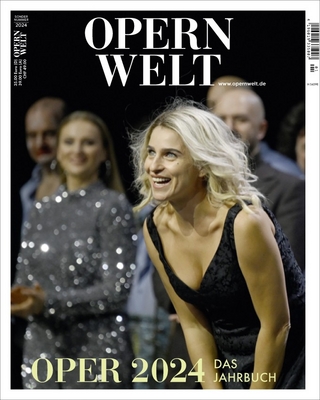
John Cage Composing, Computing, and Curating
Seiten
2025
Routledge (Verlag)
978-1-032-71747-0 (ISBN)
Routledge (Verlag)
978-1-032-71747-0 (ISBN)
- Noch nicht erschienen (ca. Januar 2025)
- Versandkostenfrei
- Auch auf Rechnung
- Artikel merken
This study reassesses Cage’s multifaceted practice from an integrated transdisciplinary perspective, using text as a premise for his musical, visual, lingual, and museal compositions.
This study reassesses Cage’s multifaceted practice from a transdisciplinary perspective, using text as a premise for his musical, visual, lingual, and museal compositions.
In his compositions, John Cage opened the structures of music, language, and the museum to change perpetuated by chance operations. His correspondences across history with an extended circle of creators, including Erik Satie, Marcel Duchamp, and Henry David Thoreau, among many others, erased single-minded authorship via methodical processing of source material. Foreshadowing ecological recycling, Cage’s late compositions for museum opened perspectives for posthuman mediation in curating and contemporary art. He conceived of anarchy as the coexistence of mutually aiding yet autonomous self-determinate entities. This book introduces Cage to the twenty-first century as a composer whose work intersects different temporalities and modes of being, the past and the present, the human and the non-human, and the individual and the communal.
The book will be of interest to scholars of art history, music, curatorial studies, and museum studies.
This study reassesses Cage’s multifaceted practice from a transdisciplinary perspective, using text as a premise for his musical, visual, lingual, and museal compositions.
In his compositions, John Cage opened the structures of music, language, and the museum to change perpetuated by chance operations. His correspondences across history with an extended circle of creators, including Erik Satie, Marcel Duchamp, and Henry David Thoreau, among many others, erased single-minded authorship via methodical processing of source material. Foreshadowing ecological recycling, Cage’s late compositions for museum opened perspectives for posthuman mediation in curating and contemporary art. He conceived of anarchy as the coexistence of mutually aiding yet autonomous self-determinate entities. This book introduces Cage to the twenty-first century as a composer whose work intersects different temporalities and modes of being, the past and the present, the human and the non-human, and the individual and the communal.
The book will be of interest to scholars of art history, music, curatorial studies, and museum studies.
Sandra Skurvida teaches in the History of Art Department at the Fashion Institute of Technology (FIT), State University of New York (SUNY).
Introduction: Cage and the Posthuman 1. Repetition and Difference: Erik Satie 2. Chance Measures: After Duchamp 3. Text Music 4. Technologies of Indeterminacy 5. Museum as Instrument Afterward: Cage and the Contemporary
| Erscheint lt. Verlag | 31.1.2025 |
|---|---|
| Reihe/Serie | Routledge Research in Art History |
| Zusatzinfo | 10 Halftones, color; 30 Halftones, black and white; 10 Illustrations, color; 30 Illustrations, black and white |
| Verlagsort | London |
| Sprache | englisch |
| Maße | 174 x 246 mm |
| Themenwelt | Kunst / Musik / Theater ► Musik ► Klassik / Oper / Musical |
| Reisen ► Reiseführer | |
| Geisteswissenschaften ► Geschichte ► Hilfswissenschaften | |
| ISBN-10 | 1-032-71747-5 / 1032717475 |
| ISBN-13 | 978-1-032-71747-0 / 9781032717470 |
| Zustand | Neuware |
| Informationen gemäß Produktsicherheitsverordnung (GPSR) | |
| Haben Sie eine Frage zum Produkt? |
Mehr entdecken
aus dem Bereich
aus dem Bereich
Buch | Softcover (2024)
Der Theaterverlag - Friedrich Berlin
CHF 48,95


